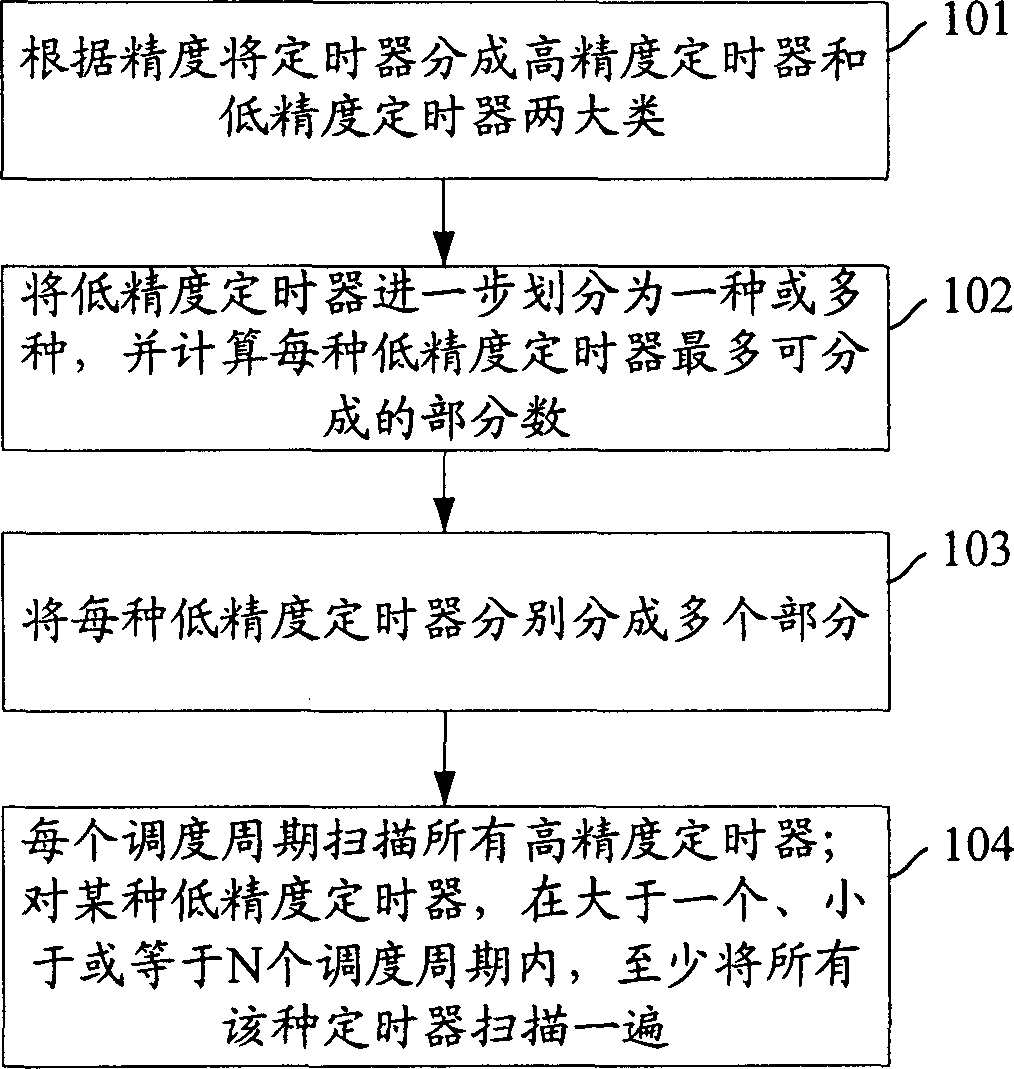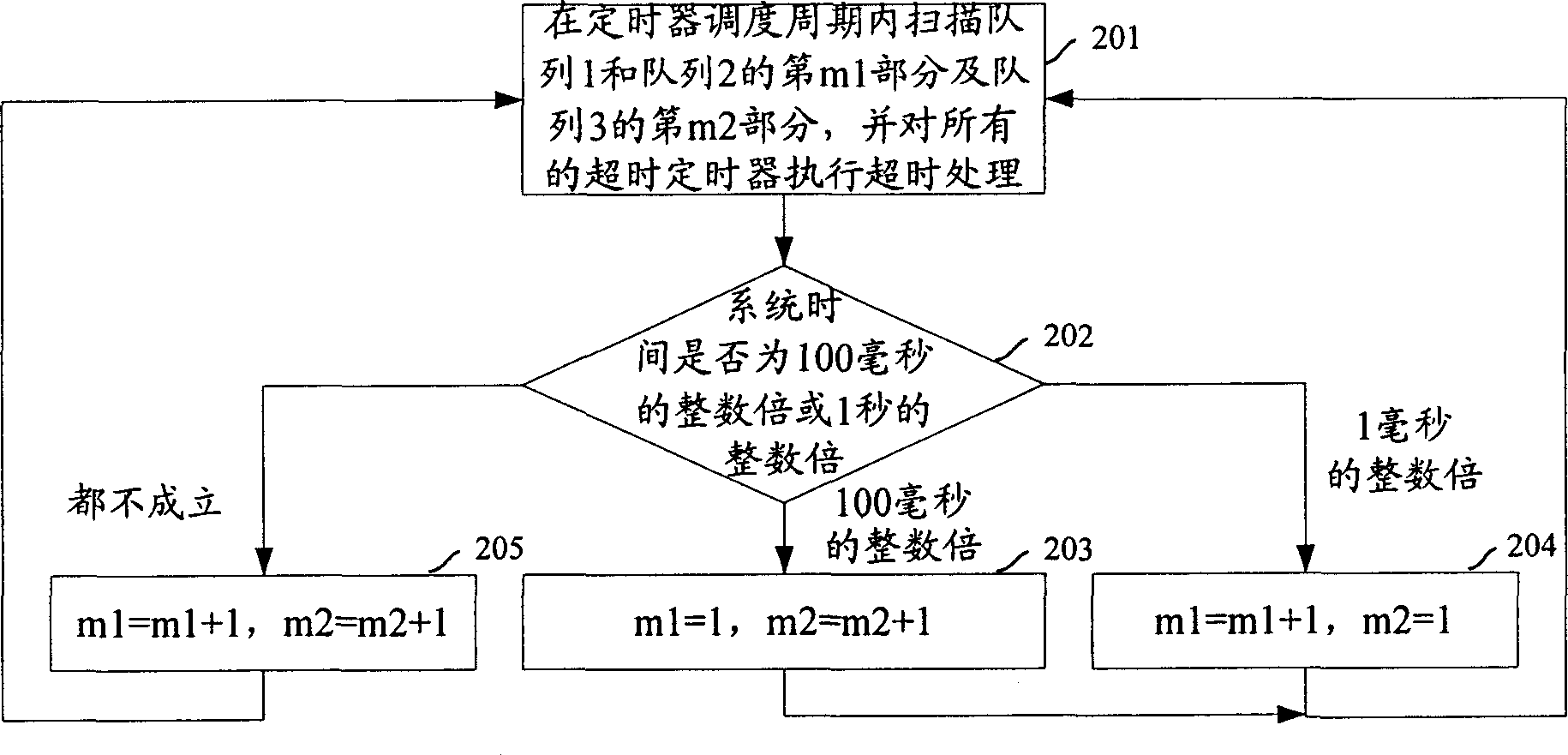Timer scheduling method
A scheduling method and timer technology, applied in multi-programming devices, digital transmission systems, electrical components, etc., can solve problems such as increased possibility, decreased timing accuracy of timers, system crashes, etc., to reduce excessive CPU consumption. possibility, avoid timing accuracy degradation, prevent system crash effect
- Summary
- Abstract
- Description
- Claims
- Application Information
AI Technical Summary
Problems solved by technology
Method used
Image
Examples
Embodiment Construction
[0020] Although there may be a large number of timers in the system, the accuracy of these timers, that is, the timing duration, may be different. Moreover, timers with very high precision, such as timers with a level of 10 milliseconds, account for a very small proportion. In modern communication systems, most of the timers are call-related timers, and their precision series is usually 1 second or 100 milliseconds, that is, it is not necessary to scan these timers in every timer scheduling cycle . For example: For a timer with an accuracy of 1 second, it only needs to be scanned once every 1 second.
[0021] In view of the above situation, the core idea of the timer scheduling method proposed by the present invention is: in each timer scheduling cycle, scan all timers whose accuracy is less than two timer scheduling cycles, and perform overtime on all overtime timers Processing; within n timer scheduling cycles, scan all the same type of timers with the same precision gre...
PUM
 Login to View More
Login to View More Abstract
Description
Claims
Application Information
 Login to View More
Login to View More - R&D
- Intellectual Property
- Life Sciences
- Materials
- Tech Scout
- Unparalleled Data Quality
- Higher Quality Content
- 60% Fewer Hallucinations
Browse by: Latest US Patents, China's latest patents, Technical Efficacy Thesaurus, Application Domain, Technology Topic, Popular Technical Reports.
© 2025 PatSnap. All rights reserved.Legal|Privacy policy|Modern Slavery Act Transparency Statement|Sitemap|About US| Contact US: help@patsnap.com


